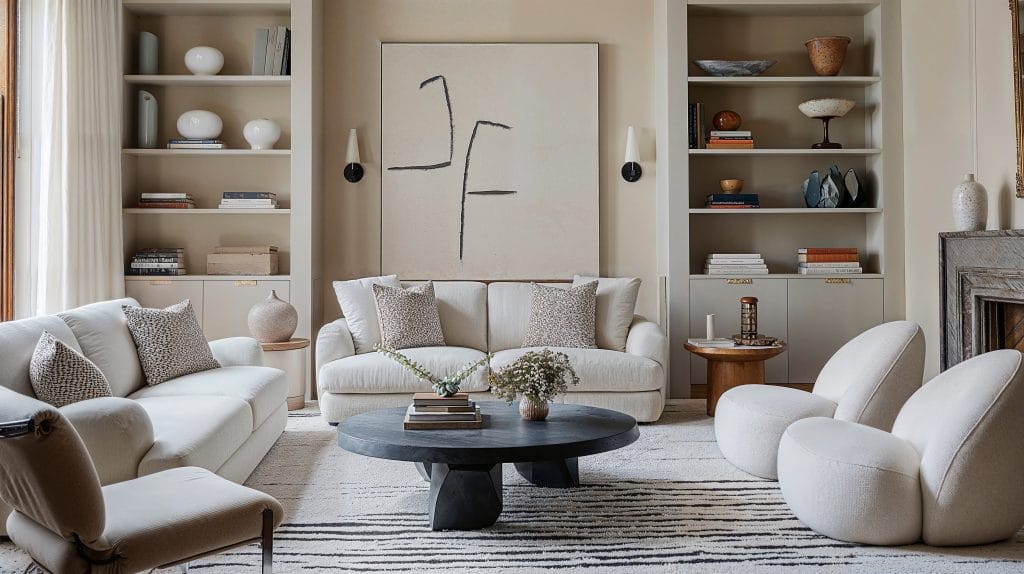Transform Your Home With Vital Concepts of Interior Decoration and Looks
By recognizing the effect of shade theory and the significance of texture and patterns, one can create rooms that are not just visually attractive however additionally deeply personal. Attaining this balance involves even more than plain design; it encompasses a critical arrangement and an eager understanding of how each component communicates within a room.
Recognizing Shade Concept
Understanding the principles of color theory allows developers to produce rooms that reverberate emotionally with occupants while satisfying practical needs. Each group plays a vital role in establishing harmony within a room.
The mental impact of colors is profound; cozy shades such as reds and oranges stimulate energy and warmth, while awesome tones like blues and greens advertise peace and harmony. The use of complementary colors enhances aesthetic rate of interest, producing striking contrasts that can elevate a space's charm.
Neutral shades, on the other hand, serve as a versatile background, allowing various other layout components to shine. It is important to consider variables such as lighting and the room's function when choosing a color scheme, as these can modify the understanding of shades throughout the day.
Ultimately, a well-considered color design can change a space, fostering a sense of convenience and style that straightens with the inhabitants' preferences. Mastery of color theory is, for that reason, a vital ability for any type of interior designer aiming to develop unified and welcoming atmospheres.
Achieving Equilibrium in Layout
Just how can developers achieve a feeling of stability in their spaces? Attaining balance in style is basic to developing harmonious insides. Developers can use 3 key types of balance: balanced, asymmetrical, and radial. Symmetrical balance includes organizing elements uniformly around a central point, promoting a feeling of order and harmony. This type usually features pairs of furnishings or artwork, improving aesthetic stability.
Unbalanced balance, on the other hand, relies upon varying components that still accomplish a cohesive look. This method enables for even more dynamic and casual plans, providing rate of interest while preserving equilibrium. By meticulously selecting differing dimensions, colors, and structures, developers can produce a visually engaging area that feels balanced yet energetic.
Radial equilibrium highlights a central centerpiece with aspects radiating outward. This design is frequently seen in round formats, where furnishings and decoration create a natural surround that draws the eye inward.
Eventually, achieving equilibrium needs thoughtful consideration of range, proportion, and the partnerships between components. miami luxury interior design. By skillfully using these equilibrium principles, designers can transform rooms into settings that really feel both visually pleasing and functionally harmonious, improving the general experience for residents
Importance of Spatial Understanding

A keen sense of spatial understanding allows designers to recognize prime focus within an area, leading the customer's attention to key features while preserving an overall sense of unity. It additionally aids in the strategic positioning of illumination, which can dramatically influence the assumption of room and mood. Additionally, comprehending spatial partnerships allows the developer to deal with the details demands of inhabitants, guaranteeing that each location offers its desired purpose without jeopardizing appearances.
Eventually, spatial understanding is important for taking full advantage of the possibility of any kind of interior room. By carefully thinking about the interplay in between measurements, design, and function, developers can develop atmospheres that not only meet functional needs but additionally evoke a sense of convenience and charm, improving the overall living experience.
Incorporating Texture and Patterns
Embracing a diverse variety of textures and patterns can considerably enhance the visual and tactile charm of an indoor area. The tactical use various materials-- such as wood, steel, material, and rock-- creates depth and rate of interest, making an area feel a lot more inviting and vibrant. Integrating smooth surfaces with harsh structures can establish a balance that draws the eye and involves the senses.
When including patterns, think about both scale and repetition. Large patterns can function as centerpieces, while smaller sized, refined styles can enhance various other aspects without frustrating the area. Layering patterns, such as pairing floral cushions with striped throws, includes intricacy and a sense of consistency if executed thoughtfully.
It is additionally critical to keep a cohesive shade combination, making certain that appearances and patterns work with each other as opposed to complete for focus. By choosing a couple moved here of key structures her response and patterns, you can develop a linked aesthetic that mirrors your individual style while improving the general ambiance of the space. Eventually, the cautious unification of these components can transform an ordinary area right into an innovative atmosphere abundant with character and heat.
Personalizing Your Space
Producing a space that shows your personality is important to achieving a truly welcoming environment. Customization in indoor layout allows you to infuse your distinct style and interests into your home, transforming it from a mere sanctuary into a haven that talks with that you are. Begin by picking a shade scheme that resonates with your feelings-- vibrant hues can stimulate, while soft tones use peace.
Incorporate art work and design that mirror your enthusiasms, whether it be travel, nature, or abstract ideas. Showing individual collections, such as publications, photos, or keepsakes, can evoke valued memories and develop focal factors within an area. Furthermore, consider personalizing practical items, like upholstered furniture, to straighten with your aesthetic choices.

Conclusion
To conclude, the improvement of a home through the important concepts of interior decoration and visual appeal requires a detailed understanding of color theory, balance, spatial understanding, texture, and personalization. Each component contributes dramatically to producing a harmonious and functional living setting - interior design firms. By thoughtfully incorporating these principles, you could try here individuals can boost the visual charm and psychological resonance of their spaces, ultimately fostering a home that mirrors special identifications while providing comfort and usefulness